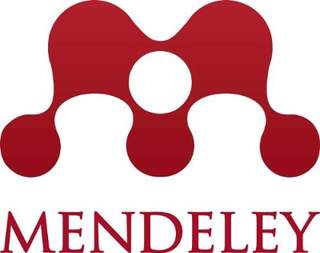THE MORATORIUM POLICY OF PEATLAND UTILIZATION: POTENTIAL ECONOMIC AND ENVIRONMENTAL BENEFITS FOR PLANTATION FORESTS
Abstract
Keywords
Full Text:
PDF (Bahasa Indonesia)References
Andriesse, J. P. (1988). Nature and Management of Tropical Peat Soils. Food and Agriculture Organization of the United Nations. Retrieved from http://www.fao.org/docrep/x5872e/x5872e00.htm#Contents
Baral, H., Guariguata, M. R., & Keenan, R. J. (2016). A proposed framework for assessing ecosystem goods and services from planted forests. Ecosystem Services, 22, 260–268. https://doi.org/10.1016/j.ecoser.2016.10.002
Glauber, A. J., Sarah, M., Adriani, M., & Gunawan, I. (2016). Kerugian dari Kebakaran Hutan : Analisa dampak ekonomi dari krisis kebakaran tahun 2015. Retrieved from http://www.globalfiredata.org/index.html.
Holden, J. (2005). Peatland hydrology and carbon release: why small-scale process matters. Philosophical Transactions: Mathematical, Physical and Engineering Sciences, 363(1837), 2891–2913. https://doi.org/10.1098/rsta.2005.1671
Junaedi, A. (2018). Growth performance of three native tree species for pulpwood plantation in drained peatland of Pelalawan district, Riau. Indonesian Journal of Forestry Research, 5(2), 119–132. https://doi.org/10.20886/ijfr.2018.5.2.95-119-132
Khasanah, N., & van Noordwijk, M. (2019). Subsidence and carbon dioxide emissions in a smallholder peatland mosaic in Sumatra, Indonesia. Mitigation and Adaptation Strategies for Global Change, 24(1), 147–163. https://doi.org/10.1007/s11027-018-9803-2
Maturana, J. (2005). Economic Costs and Benefits of Allocating Forest Land for Industrial Tree Plantation Development in Indonesia. Bogor. Retrieved from http://www.cifor.org/publications/pdf_files/WPapers/WP30Maturana.pdf
Newbold, S., Griffiths, C., Moore, C., Wolverton, A., & Kopits, E. (2010). The “Social Cost of Carbon” Made Simple. Environmental Economics.
Nurcan, R., & Sribudiani, E. (2015). Analisa harga jual kayu akasia berdasarkan pendekatan biaya produksi pembangunan hutan tanaman industri. Pekanbaru. Retrieved from https://media.neliti.com/media/publications/201810-none.pdf
Nurulita, Y., Adetutu, E. M., Gunawan, H., Zul, D., & Ball, A. S. (2016). Restoration of tropical peat soils: The application of soil microbiology for monitoring the success of the restoration process. Agriculture, Ecosystems and Environment, 216, 293–303. https://doi.org/10.1016/j.agee.2015.09.031
Osaki, M., & Tsuji, N. (2015). Tropical peatland ecosystems. Tropical Peatland Ecosystems. https://doi.org/10.1007/978-4-431-55681-7
Pristiwati, G. U. (2015). Valuating and Mapping Ecosystem Services to Support Sustainable Land Use Planning and Management Area of Study: Peatland Area in Riau, Indonesia. Wageningen University. Retrieved from https://edepot.wur.nl/363631
Purba, C., Indrarto, G. B., Pohnan, E., Putraditama, A., & Stolle, F. (2015). Indonesia’s forest moratorium : Impacts and next steps.
Rochmayanto, Y., Darusman, D., & Rusolono, T. (2010). The Change of Carbon Stock and It ’ s Economic Value on Peatswamp Forest Conversion towards Pulpwood Industrial Plantation Forest. Jurnal Penelitian Hutan Tanaman, 7(2), 93–106.
Russi, D., ten Brink, P., Farmer, A., Badura, T., Coates, D., Förster, J., … Davidson, N. (2013). TEEB for Water and Wetlands. London and Brussels. Retrieved from www.ieep.eu.
Sumarga, E., Hein, L., Edens, B., & Suwarno, A. (2015). Mapping monetary values of ecosystem services in support of developing ecosystem accounts. Ecosystem Services, 12, 71–83. https://doi.org/10.1016/j.ecoser.2015.02.009
Widyati, E. (2011). Overview on Optimizatin of Peat Lands Management and Climate Change Issues. Tekno Hutan Tanaman.
DOI: https://doi.org/10.20886/jakk.2019.16.2.133-143
Copyright (c) 2019 Jurnal Analisis Kebijakan Kehutanan

This work is licensed under a Creative Commons Attribution-NonCommercial-ShareAlike 4.0 International License.



